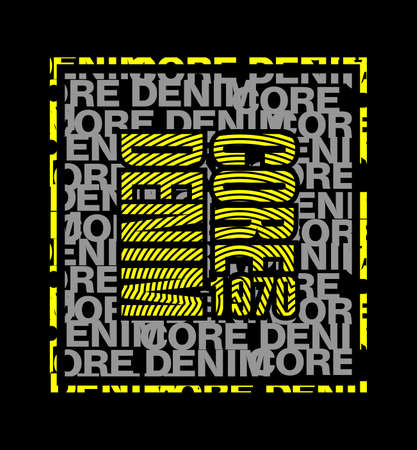Symbolism of the Death Card in American Context
The Death card, one of the most iconic figures in tarot, is often misunderstood—especially within the cultural landscape of the United States. Traditionally, this card does not represent physical death, but rather a profound process of transformation and renewal. In classic tarot symbolism, Death rides a white horse, carrying a black flag emblazoned with a white rose. This imagery suggests purity, inevitability, and new beginnings emerging from endings. Within contemporary U.S. culture, these themes take on unique nuances shaped by American values such as reinvention, resilience, and the pursuit of personal growth. The Death card frequently surfaces during periods of transition—whether it’s a career shift, the end of a relationship, or societal change—reminding Americans that letting go is an essential step toward progress. In a society built on narratives of second chances and fresh starts, the Death card embodies not just closure but also hope for what comes next. As such, its symbolism resonates deeply with American ideals about transformation: endings are rarely final; they are openings to new stories waiting to be written.
2. Death and Transformation in American Pop Culture
The Death card’s symbolism of endings, transformation, and new beginnings has found a powerful echo in American pop culture. U.S. movies, TV shows, music, and literature often reinterpret this archetype, reflecting both collective anxieties and hopes about change. In the American context, death rarely signifies a literal end; instead, it is a narrative device for renewal, reinvention, and second chances—a concept deeply embedded in the national ethos.
Transformation on Screen: Movies and TV Shows
American cinema and television have consistently harnessed the motifs of death and rebirth to drive character development and plot evolution. From classic films like The Shawshank Redemption—where Andy Dufresne’s “death” as an inmate leads to his spiritual rebirth—to series such as Breaking Bad, where Walter White’s metaphorical death as a mild-mannered teacher triggers his transformation into Heisenberg, the Death card’s themes are unmistakable. In superhero franchises like Marvel’s Avengers: Endgame, characters face literal and figurative deaths that catalyze growth, unity, or the birth of new heroes.
Table 1: Notable Examples of Death Card Themes in U.S. Media
| Medium | Title | Form of “Death” | Transformation/New Beginning |
|---|---|---|---|
| Movie | The Lion King | Mufasa’s Death | Simba’s Rise as King |
| TV Show | The Sopranos | Tony’s Near-Death Experience | Shift in Family Dynamics & Power Struggles |
| Music | Taylor Swift’s “Reputation” Era | Public Persona “Death” | Cultural Reinvention & Artistic Growth |
| Literature | The Great Gatsby | Gatsby’s Death | Moral Reckoning for Other Characters |
Death Card Themes in American Music and Literature
In U.S. music, artists like Johnny Cash and Beyoncé have explored personal and artistic metamorphosis through lyrics about letting go of the past. Albums such as Kendrick Lamar’s DAMN. chronicle cycles of destruction and rebirth at both personal and societal levels. American literature—from Mark Twain to Toni Morrison—frequently leverages the motif of loss to highlight possibilities for redemption or radical self-discovery.
Cultural Takeaways: The Death Card as Catalyst for Renewal
The recurring presence of the Death card theme across American pop culture underscores a unique cultural optimism: endings are not failures but thresholds to something greater. Whether through a protagonist’s journey after loss or a society’s evolution following tragedy, the spirit of transformation is celebrated as fundamentally American—a testament to resilience, reinvention, and hope.

3. Endings and New Beginnings in American Social Narratives
The symbolism of the Death card, with its focus on transformation and renewal, finds a powerful echo in foundational American social narratives. At the heart of U.S. culture lies an enduring fascination with the idea that every ending is an invitation to a new beginning—a concept woven into the nation’s most celebrated values: self-reinvention, the pursuit of the American Dream, and a collective spirit of resilience.
Self-Reinvention: The Power to Begin Again
One of America’s most treasured ideals is self-reinvention—the belief that anyone, regardless of their past or origins, can start over and create a new identity or path. Stories of immigrants arriving at Ellis Island, entrepreneurs bouncing back from failure, or individuals overcoming personal adversity all reflect the transformative energy embodied by the Death card. In U.S. cultural imagination, endings are not final; they are portals to reinvention, reinforcing the notion that change, even when painful, is both natural and necessary.
The American Dream: Transformation as Aspiration
The American Dream itself hinges on themes of transformation. It promises that through determination and hard work, people can transcend their circumstances—moving from scarcity to abundance, obscurity to prominence. This dream often demands letting go of old ways or identities, mirroring the Death card’s message that one must shed what no longer serves in order to grow. Whether it’s changing careers midlife, moving across the country for a fresh start, or embracing new cultural norms, Americans see endings as essential steps on the path to personal fulfillment.
Resilience: Embracing Change as Strength
Embedded within these narratives is a deep-rooted belief in resilience—the ability to withstand loss or hardship and emerge stronger. From national tragedies to personal setbacks, U.S. history is marked by stories where communities and individuals turn adversity into opportunity. The Death card’s archetype of death and rebirth mirrors this ethos: Americans often frame setbacks not as failures but as necessary catalysts for growth and innovation.
Narratives Across Media and Everyday Life
This cycle of endings and beginnings pervades not just historical accounts but also popular media—from Hollywood films about redemption arcs to real-life tales celebrated in news stories and local folklore. Such narratives encourage Americans to view transition periods not with fear, but with hope and creative possibility.
Conclusion: Cultural Embrace of Transformation
In sum, the themes represented by the Death card are deeply embedded in American consciousness. Endings are rarely seen as defeats; instead, they are honored as opportunities for self-discovery, progress, and communal renewal—fundamental aspects of what it means to pursue life in America.
4. Death Card Imagery in U.S. Art and Fashion
The Death card’s symbolism—traditionally associated with transformation, rebirth, and letting go—has found vibrant expression within American art and fashion. Far from being relegated to the mystical or gothic margins, its motifs now appear across visual arts, tattoo culture, and clothing design, reflecting how U.S. society both fears and embraces change.
Death Card Motifs in Visual Arts
American artists frequently leverage the Death card’s iconography—skeletons, scythes, wilting flowers, and rising suns—to evoke themes of transition. Contemporary painters may reinterpret these symbols to address personal growth or societal upheaval, using bold colors and abstract forms to move beyond literal death toward metaphors of renewal. Street artists have painted large-scale murals featuring the Death card as a call for social justice or environmental awakening, emphasizing that every ending can spark new beginnings.
Tattoos: Personal Narratives of Change
Death card tattoos are especially popular among Americans marking significant life shifts—divorce, recovery from illness, or major career changes. These tattoos typically blend traditional tarot imagery with personalized elements such as dates or names, signifying not just mortality but resilience and the courage to evolve. The permanence of tattoos mirrors the weightiness of transformation: by choosing this motif, individuals declare their readiness to embrace endings as preludes to new chapters.
Fashion: From Subculture to Mainstream
Once a staple of goth and punk subcultures, Death card imagery has moved into mainstream American fashion. Designers incorporate skeleton prints, tarot card patches, and symbolic color palettes (black for endings; gold for hope) into everything from streetwear to high fashion collections. These choices allow wearers to visually engage with ideas of impermanence and reinvention—an aesthetic affirmation that change is not only inevitable but also stylishly embraced.
Table: Ways the Death Card Is Used in U.S. Creative Expression
| Medium | Common Motifs | Cultural Message |
|---|---|---|
| Visual Art | Skeletal figures, sunsets/sunrises, wilted flowers | Transformation & Social Commentary |
| Tattoos | Death card with dates/names, scythe + rose | Personal Growth & Resilience |
| Fashion Design | Tarot prints, black/gold color schemes | Embracing Change & Reinvention |
Cultural Attitudes Toward Change
This widespread adoption signals a cultural shift in how Americans relate to transformation. Where once the Death card might have symbolized fear or taboo, its presence in art and fashion suggests a growing acceptance—even celebration—of change as both necessary and empowering. By wearing, displaying, or tattooing these motifs, Americans express an evolving narrative: endings are not failures but fertile ground for something new.
5. Practical Applications: The Death Card in Modern American Spirituality
The Death card, often misunderstood as a harbinger of doom, has found renewed significance in the landscape of modern American spirituality. Far from its traditional associations with physical death, contemporary tarot enthusiasts and holistic practitioners embrace this card as a powerful metaphor for transformation and renewal. In the U.S., where personal development is a central cultural value, the Death card’s themes of endings and new beginnings resonate deeply with those seeking growth and self-improvement.
Tarot Enthusiasts: Embracing Change
Within American tarot communities, the Death card is frequently seen as an invitation to shed outdated beliefs or behaviors. Readers encourage querents to reflect on what needs to be released in order to move forward—be it toxic relationships, limiting mindsets, or stagnant routines. This approach aligns with the U.S. ethos of reinvention and self-actualization, empowering individuals to view endings not as failures but as necessary preludes to progress.
Therapeutic Contexts: A Catalyst for Healing
Increasingly, therapists and counselors across the United States are integrating tarot cards—including Death—into their practice. The symbolic language of the Death card serves as a gentle entry point for discussing challenging transitions such as divorce, career changes, or grief. By externalizing these experiences through imagery, clients can process complex emotions in a safe and supportive environment. This method complements established therapeutic modalities like narrative therapy and mindfulness, both of which enjoy widespread popularity in American mental health care.
Self-Reflection and Empowerment
In workshops and self-help circles from Brooklyn to Los Angeles, the Death card is used as a journaling prompt or meditation focus. Participants are invited to explore questions like: “What chapter of my life is ending?” or “Where am I ready to invite transformation?” Such practices encourage Americans to take agency over their personal journeys, transforming fear of change into a proactive embrace of possibility. In this way, the Death card’s legacy is continually reimagined—not as an end, but as a beginning loaded with potential.
6. Controversies and Misconceptions in American Discourse
In the United States, the Death card has long been a lightning rod for controversy, misunderstanding, and fear. This is rooted not only in its ominous name but also in deep-seated cultural attitudes toward death itself. Addressing these misconceptions requires examining both the symbolic role of the Death card within tarot and the broader American discomfort with mortality.
The Literal Versus the Symbolic
One of the most persistent misconceptions is that drawing the Death card predicts literal, physical death. In American popular culture—from horror movies to sensationalized media—the card is often depicted as a harbinger of doom. This dramatization overlooks the card’s traditional meaning: transformation, endings, and the necessary clearing away of old patterns to make way for new beginnings. The tendency to interpret symbolism literally reflects a wider American skepticism or unfamiliarity with metaphorical thinking in divinatory practices.
Superstition and Fear
Superstitious attitudes toward tarot persist across different regions of the U.S., sometimes fueled by religious beliefs or historical suspicion of occult practices. For many Americans, encountering the Death card can trigger anxiety about bad luck or invite fears of attracting misfortune. Such responses are amplified by social taboos around discussing death openly—a topic often avoided or sanitized in public discourse.
Cultural Taboos and Avoidance
American society tends to view death as a subject best left undiscussed, resulting in a collective discomfort that extends to any symbols associated with mortality. This avoidance can lead to stigmatization of those who engage with tarot or other esoteric arts, further reinforcing myths about the Death card’s meaning. While some communities have begun to embrace more open conversations about end-of-life issues, mainstream culture still struggles with reframing death as part of a natural cycle.
Toward Greater Understanding
Challenging these controversies and misconceptions starts with education and open dialogue. By recognizing that the Death card speaks primarily to transformation rather than demise, Americans can begin to see its appearance as an invitation to growth rather than a threat. In this way, the Death card offers a unique opportunity for cultural reflection—inviting individuals and communities to confront their own fears and reimagine what it means to move through endings toward new beginnings.


